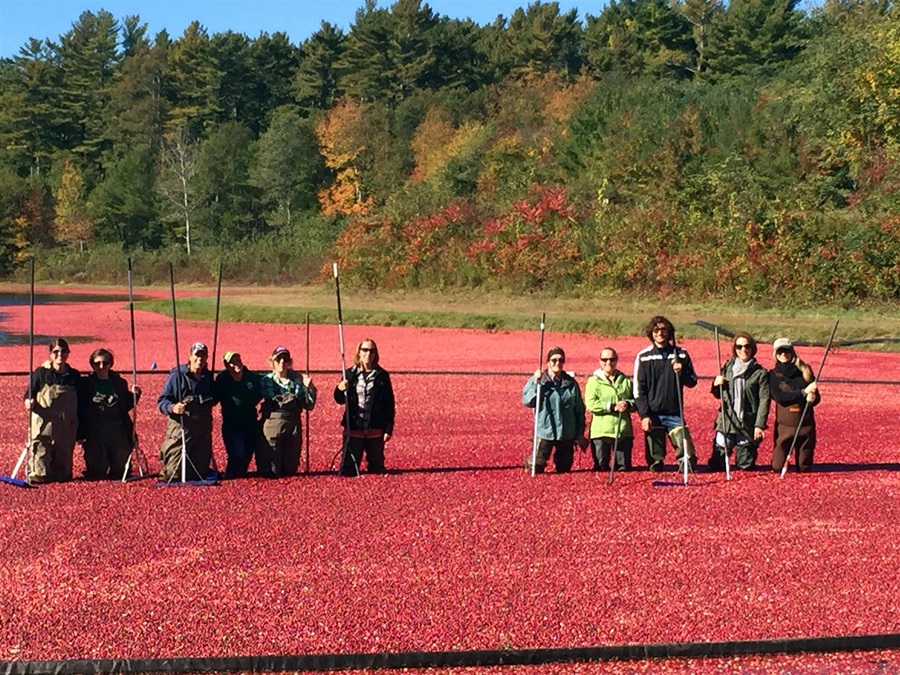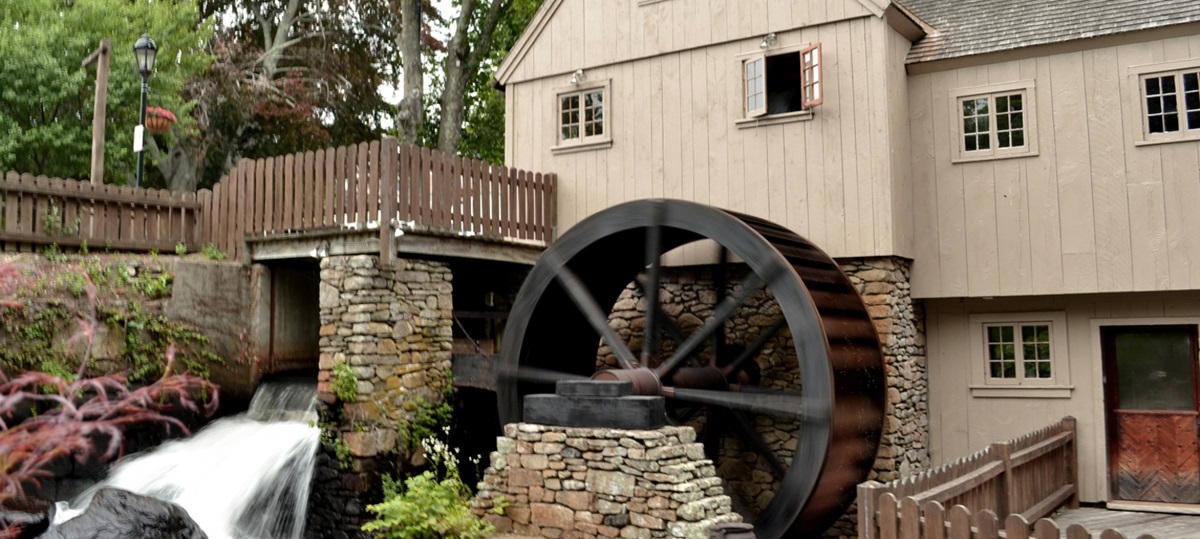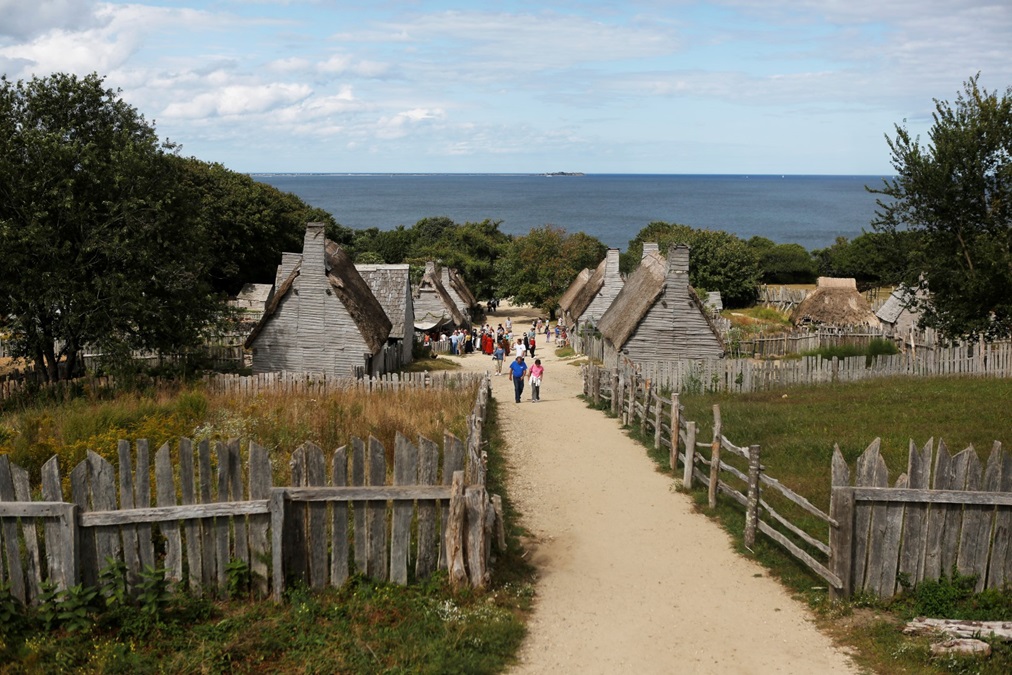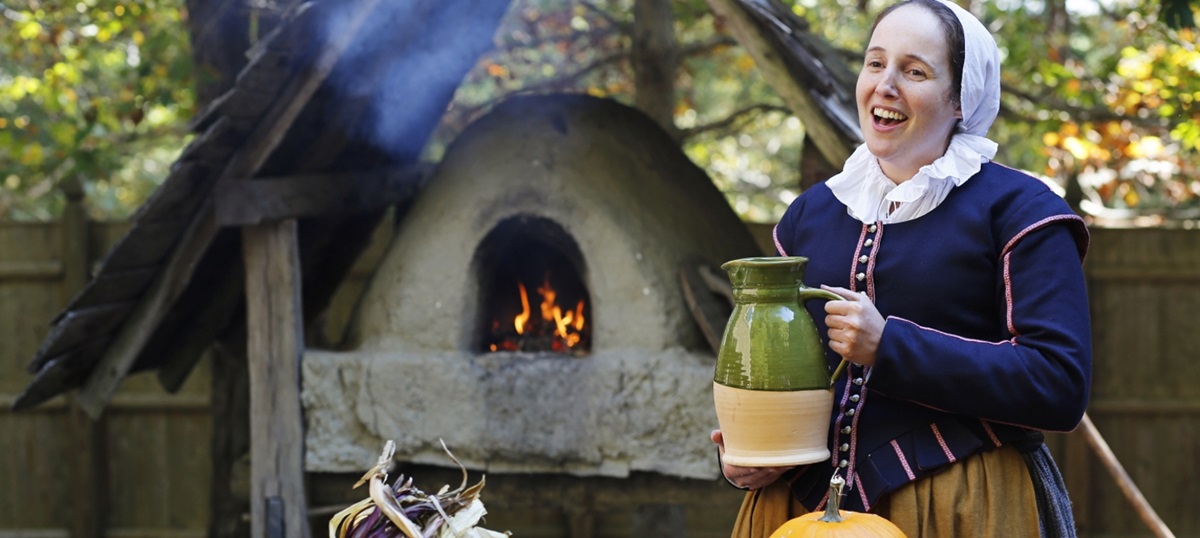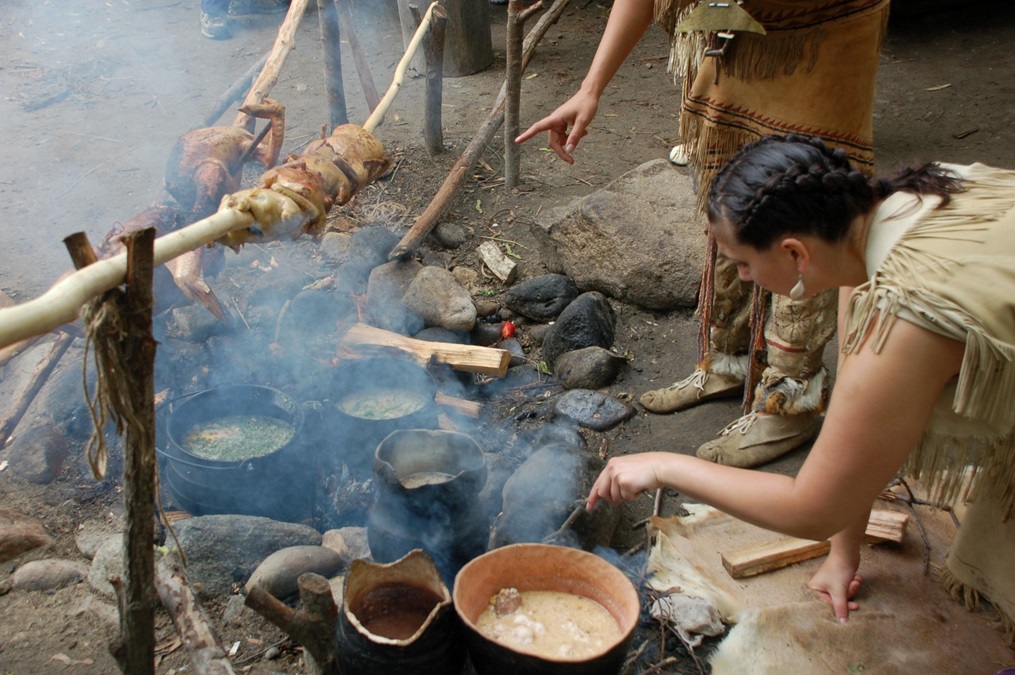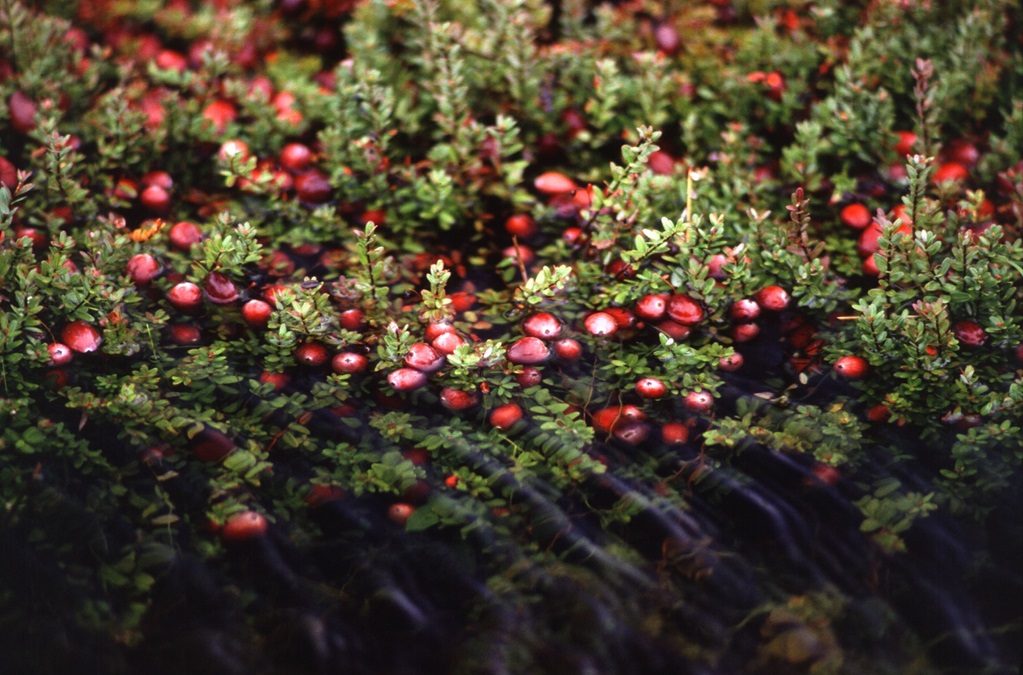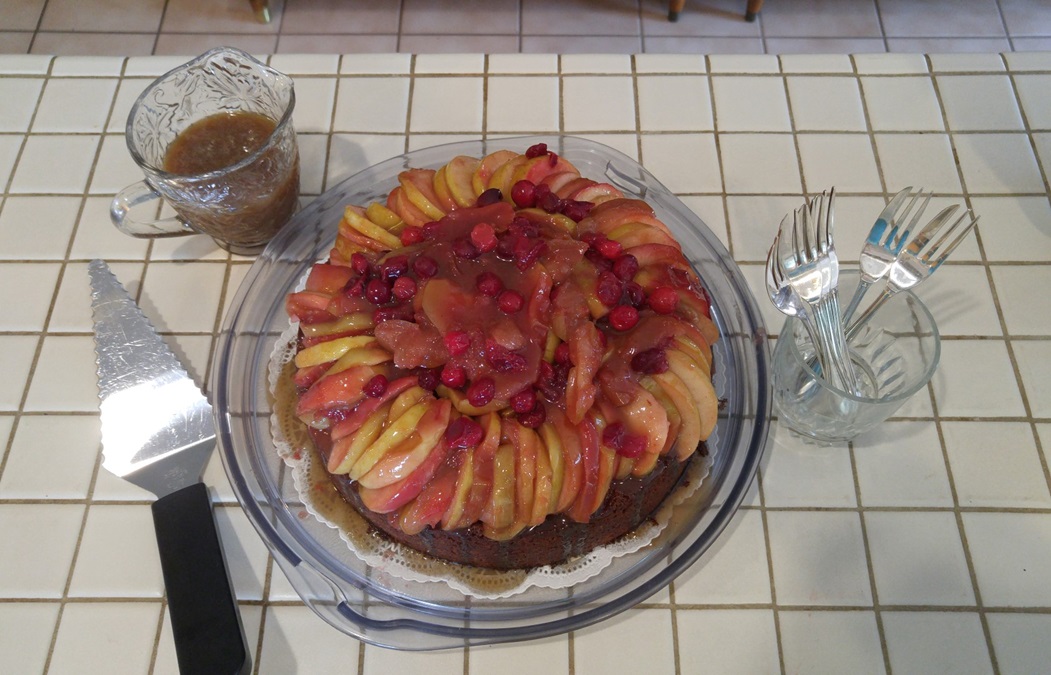Pilgrims and cranberries make for a great fall getaway
Plymouth, Massachusetts
Fall in New England is simply glorious. The beech and maple trees blaze gold and crimson, the air has a bright crispness, and the sun’s lower angle brings out the colors in everything. Fall also means cranberry season in southern Massachusetts, so why not fly in to Plymouth Municipal Airport (home of the popular Plane Jane’s Place restaurant), rent a car, and make the short drive to see a bog flooded with scarlet cranberries? And while in Plymouth, stop by the wharf and check out the rock. Plymouth Rock. Yes, that one.
The Pilgrims actually first set foot in the New World in 1620 at Cape Cod’s northern tip, but they soon moved on to Plymouth. The story was that William Bradford and the Mayflower Pilgrims stepped onto a large rock in the harbor before setting foot at Plymouth. This rock was identified in 1741 by 94-year-old church elder Thomas Faunce, who swore that several original Mayflower passengers had pointed out the rock to him. The rock, originally carried to that spot by an ancient glacier, weighed an estimated 20 tons.
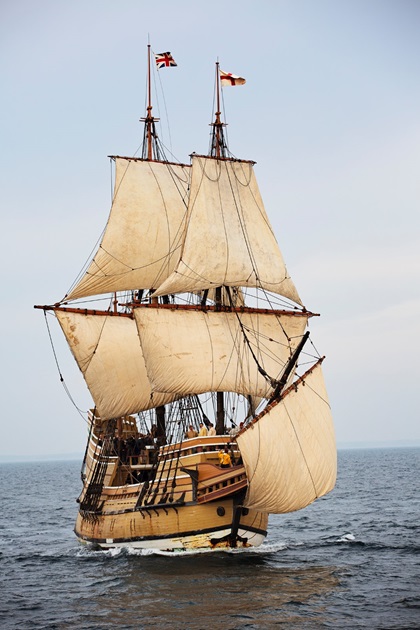
Only months later, the first military engagements of the Revolutionary War, the Battles of Lexington and Concord, were fought on April 19, 1775 (see the article about visiting Concord). We all know how that turned out. In 1880, what was left of Plymouth Rock’s upper half was hauled back from the shrine to its original position, re-joined to the lower half with cement, and “1620” was inscribed into it. During the 106 years the halves had been separated, souvenir hunters had chipped pieces off the upper half, including a 40-pound piece now on display in Brooklyn. The rock is estimated to be about half its original size.
Nowadays, Plymouth Rock lies near the water’s edge inside a portico with Greek-style columns, built in 1920 to celebrate the tercentenary of the Pilgrims’ landing. Only its top one-third is visible; the rest lies beneath the sand. It’s always open and free parking is nearby. At the wharf you can normally visit the Mayflower II, a full-scale replica of the original. However, in November 2016 the ship departed for a complete restoration at Mystic Seaport in Connecticut, to ready her for the 400th anniversary of the original Mayflower landing. Meanwhile, the shops on “Olde Main Street,” one block inland, are unique, and many specialize in antiques.
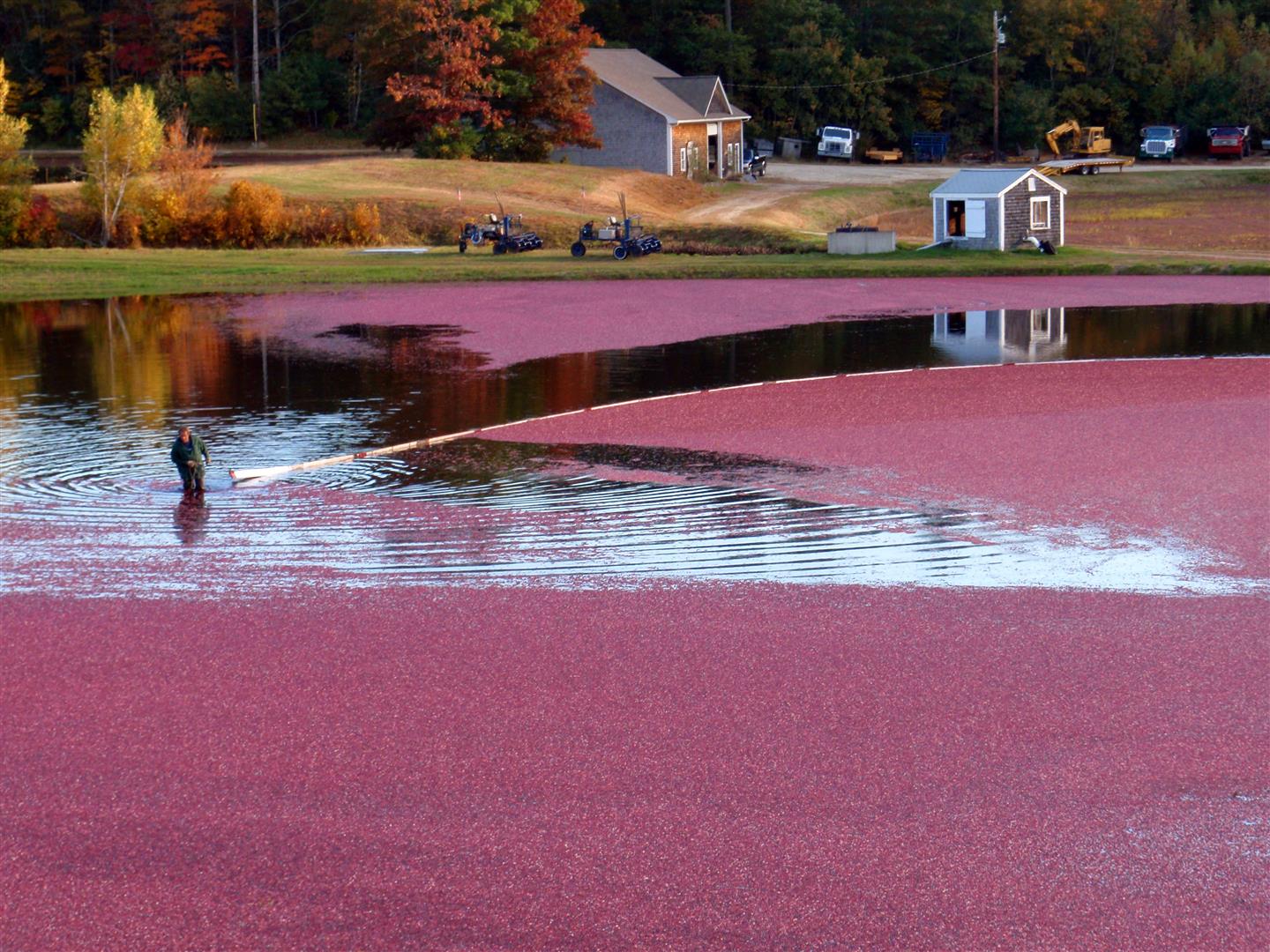
Plymouth is chock-full of history, much of it thoughtfully preserved. Numerous tours are available to a wide variety of historic homes, mansions, and museums. Two blocks south of Plymouth Rock and nestled on Town Brook, the Plimoth Grist Mill tells the story of corn meal grinding in the colony. Two miles south is a 17th-century English Village complete with reenactors in full costume that will take you back 400 years. At the Plimoth Plantation Craft Center, artisans are reviving and perpetuating ancient technologies that were in danger of being lost. Pick up some pottery, clothing, stationery, or foods that were crafted using these techniques.
America’s first commercial cranberry crop was harvested in Massachusetts in 1816. Cranberries are generally harvested around mid-October. A 12-minute drive west from Plymouth Rock, Mayflower Cranberries is a family operated farm that offers cranberry harvest tours plus a unique and popular program called “Be the Grower,” a two-hour experience where you put on waders and join the grower in the bog to help with the harvest.
In Middleboro, just a 10-minute drive from Mayflower Cranberries, you’ll find On Cranberry Pond B&B, opened in 1989. Innkeeper Jeannine LaBossiere-Krushas is known for her cranberry delicacies like a puff pancake, crème brûlée French toast, and muffins (her tart made the cover of Martha Stewart’s Living), as well as her quiche. The inn’s location between a gorgeous pond and the cranberry bogs, surrounded by woods, makes it perfect for walking and birdwatching. Five rooms have bog, pond, and/or landscape views. The Master Suite comes with a full kitchen and whirlpool tub, or, open the Cranberry Room’s sliding glass door and enjoy your coffee out on the pergola.
As the quiet season approaches, why not make a trip to Plymouth? See where America started, and revel in the splendor of fall colors and the simple beauty of the cranberry harvest. Your memories will make those berries taste even better, come Thanksgiving.

Share your favorite destination in the AOPA Hangar: Places to fly, things to do, where to eat!

